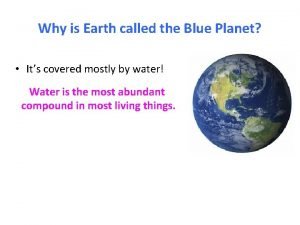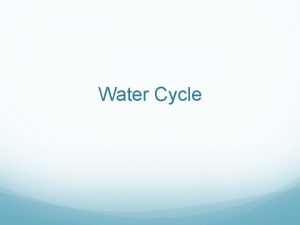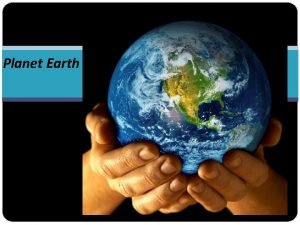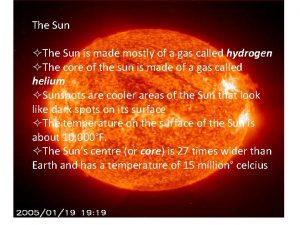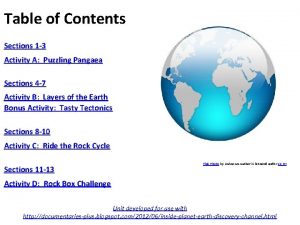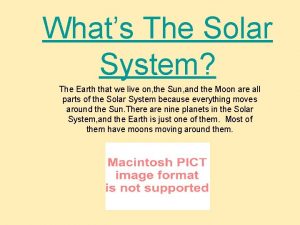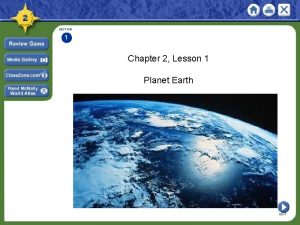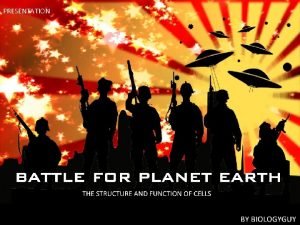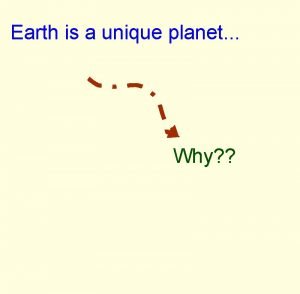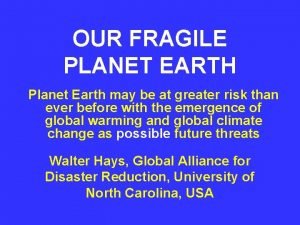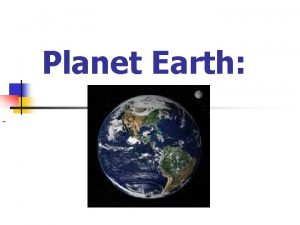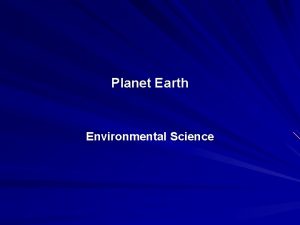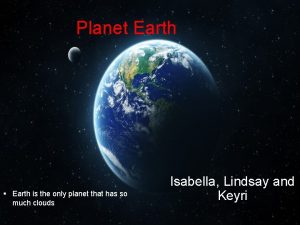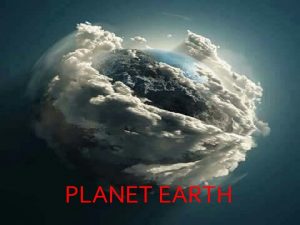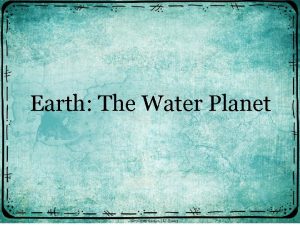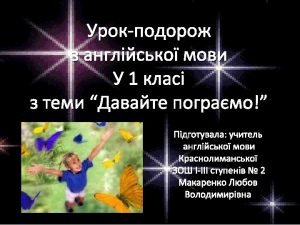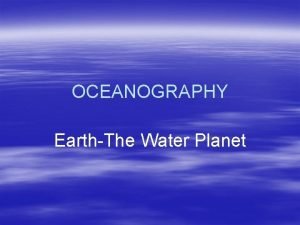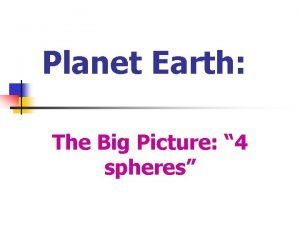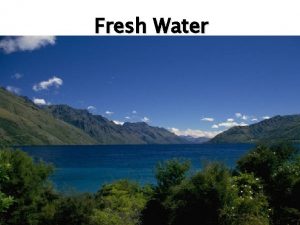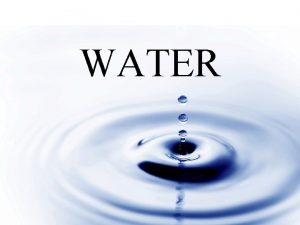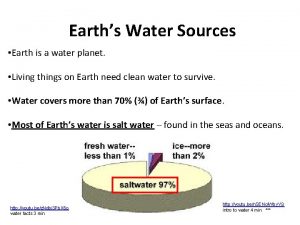Earth The Water Planet Water is essential for

















- Slides: 17

Earth: The Water Planet

Water is essential for living things to grow, reproduce, and carry out important processes. About 97% of Earth’s water is salt water found in the ocean, while the other 3% is fresh water, with the majority of that 3% found in huge masses of ice near Earth’s poles.

H 2 O – chemical formula used to represent water’s unique structure which is made of two hydrogen (H) atoms bonded with one oxygen (O) atom to form a water molecule Water is a polar molecule, meaning the positive hydrogen end of one water molecule attracts the negative oxygen ends of another

Water’s unique properties • Surface tension – molecules on surface of water cause a tightness, almost giving water a “skin”. • Universal solvent – water is known as the universal solvent because many substances dissolve it in.

Water’s unique properties • Capillary action – allows water to move through materials with pores or narrow spaces (ex. water traveling up stems to leaves) • Changing state – water can change into all states of matter (solid, liquid, gas) within Earth’s temperature range. Øevaporation – process of liquid changing to gas at surface Øcondensation – process of gas changing to a liquid Ømelting – process of changing a solid to liquid using heat

The Water Cycle Continuous process by which water moves through the living and nonliving parts of the environment. Sun is the energy source that drives the water cycle Key Vocabulary Words: Precipitation Infiltration Condensation Transpiration Aquifer Evaporation Ground Water

What is the water cycle? Water constantly moves among the oceans, the atmosphere, the solid Earth (groundwater), and the biosphere. This unending circulation of Earth’s water supply is the water cycle.


• evaporation – most takes place over the ocean • transpiration – plants release water to air through leaves • condensation – clouds form as water vapor cools • precipitation – water droplets in clouds become heavy and fall back to Earth • groundwater – water that fills the spaces in soil and rock layers

Evaporation: Water changes from a liquid to a gas or vapor • Most takes place over the ocean • Accounts for 90% of the moisture that enters the air

Transpiration • Transpiration occurs when plants release water into the atmosphere. About 10% of moisture in the air.

Condensation Water vapor cools as it rises, and it changes back into a liquid -Forms clouds -Opposite of evaporation

Precipitation is when water is released from clouds in the form of rain, sleet, freezing rain, snow, or hail.

Infiltration and Ground water • Water moves and is soaked into rock and soil through cracks and pore spaces. This is referred to as ground water.


Water Cycle Foldable Outside: Draw a picture for each part of the water cycle Inside flap: On each flap, write what happens during each step Inside back: Draw a picture of how each step works together

 Why is earth called a blue planet it is because of the
Why is earth called a blue planet it is because of the Water and water and water water
Water and water and water water Plamatic acid
Plamatic acid Run off water cycle
Run off water cycle We live on planet earth
We live on planet earth The sun is made mostly of
The sun is made mostly of Discovery channel inside planet earth worksheet answer key
Discovery channel inside planet earth worksheet answer key Whats the farthest planet from earth
Whats the farthest planet from earth Lesson 1 planet earth
Lesson 1 planet earth Battle for planet earth
Battle for planet earth Natural science term 4 grade 7
Natural science term 4 grade 7 Pure planet sports salts
Pure planet sports salts Why is the earth called unique planet
Why is the earth called unique planet Kontinuitetshantering
Kontinuitetshantering Typiska drag för en novell
Typiska drag för en novell Tack för att ni lyssnade bild
Tack för att ni lyssnade bild Ekologiskt fotavtryck
Ekologiskt fotavtryck Shingelfrisyren
Shingelfrisyren
